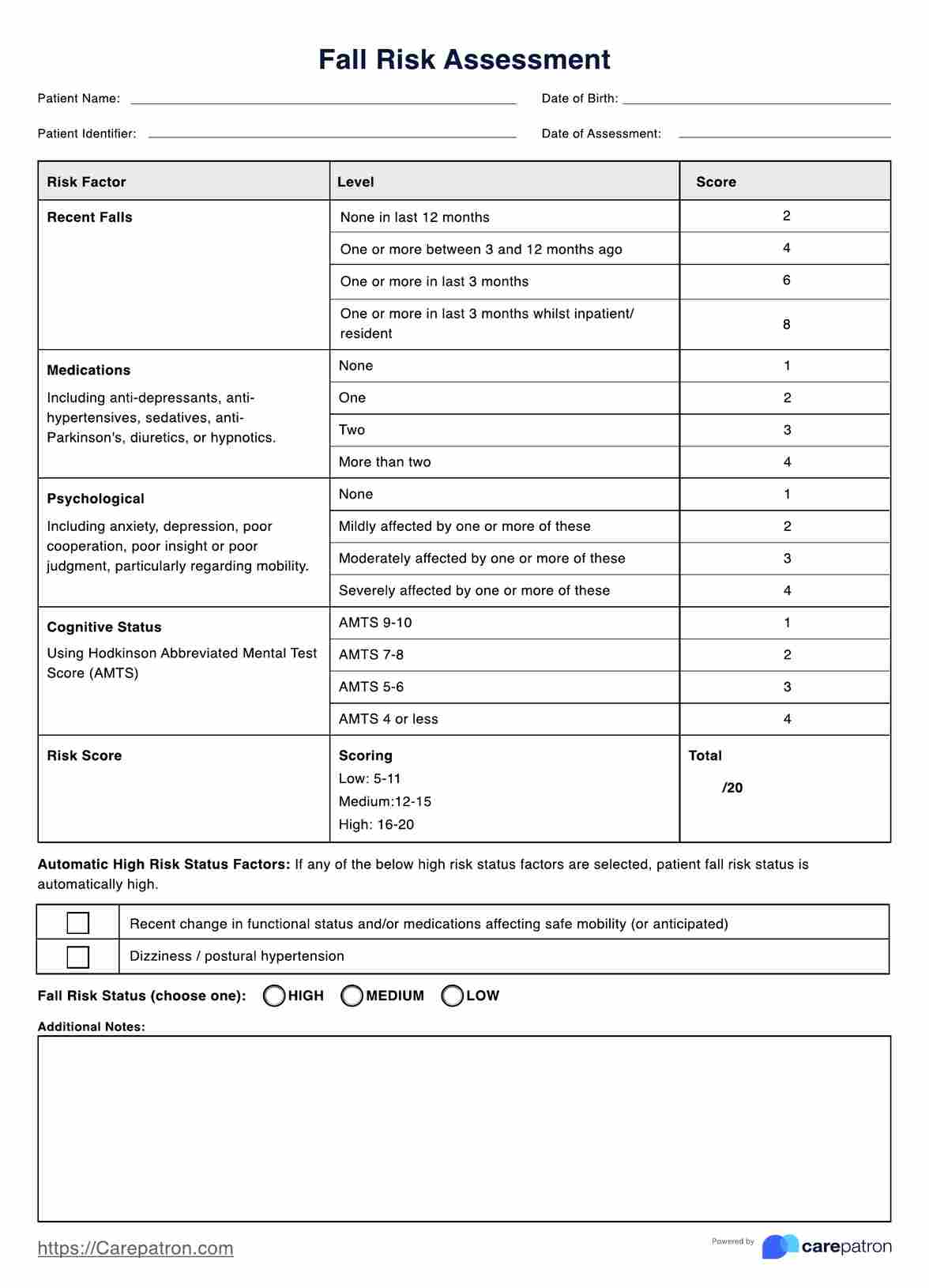Our Dementia Fall Risk Statements
The Greatest Guide To Dementia Fall Risk
Table of ContentsNot known Facts About Dementia Fall RiskThe Dementia Fall Risk DiariesLittle Known Facts About Dementia Fall Risk.Dementia Fall Risk for BeginnersIndicators on Dementia Fall Risk You Should Know
The FRAT has three areas: fall threat standing, danger variable list, and action plan. An Autumn Threat Status includes data regarding history of recent falls, medications, psychological and cognitive status of the patient - Dementia Fall Risk.If the person ratings on a danger aspect, the equivalent number of factors are counted to the individual's loss threat score in the box to the far. If a client's loss risk rating completes five or greater, the person goes to high risk for drops. If the client scores just 4 points or reduced, they are still at some risk of dropping, and the nurse should utilize their best professional assessment to manage all autumn threat elements as part of an alternative care plan.
These typical approaches, in basic, aid create a safe setting that lowers unintended drops and delineates core preventive actions for all patients. Indicators are important for clients at threat for falls.
The Ultimate Guide To Dementia Fall Risk
Wristbands must include the person's last and initial name, day of birth, and NHS number in the UK. Information ought to be printed/written in black versus a white history. Just red shade must be utilized to indicate special patient standing. These recommendations are regular with present advancements in person recognition (Sevdalis et al., 2009).
Products that are too much might call for the individual to reach out or ambulate unnecessarily and can possibly be a threat or add to drops. Aids protect against the patient from going out of bed with no support. Nurses respond to fallers' telephone call lights quicker than they do to lights initiated by non-fallers.
Visual problems can considerably create falls. Maintaining the beds closer to the flooring minimizes the danger of falls and major injury. Putting the mattress on the floor dramatically decreases fall risk in some health care setups.
Get This Report on Dementia Fall Risk
People that are tall and with weak leg muscles who attempt to remain on the bed from a standing position are most likely to drop onto the bed due to the fact that it's also low for them click resources to lower themselves securely. If a tall individual attempts to obtain up from Our site a reduced bed without aid, the patient is likely to fall back down onto the bed or miss the bed and drop onto the flooring.
They're developed to advertise prompt rescue, not to protect against drops from bed. Aside from bed alarms, enhanced supervision for high-risk individuals additionally may help prevent drops.
-copy-5.jpg)
Individuals with an evasion gait boost fall possibilities dramatically. To minimize fall risk, shoes must be with a little to no heel, slim soles with slip-resistant step, and sustain the ankles.
The Ultimate Guide To Dementia Fall Risk
In a study, homes with appropriate lighting report less falls (Ramulu et al., 2021). Renovation in illumination at home might lower fall rates in older adults.

Sitters are reliable for guaranteeing a safe, safeguarded, and risk-free environment. Studies showed very low-certainty evidence that caretakers decrease loss risk in acute treatment medical facilities and just moderate-certainty that choices like video tracking can reduce sitter usage without enhancing loss threat, suggesting that caretakers are not as valuable as initially thought (Greely et al., 2020).
Some Known Incorrect Statements About Dementia Fall Risk
-copy-5.jpg)
Raised physical conditioning reduces the danger for drops and check my site restricts injury that is suffered when autumn transpires. Land and water-based exercise programs might be in a similar way advantageous on equilibrium and stride and therefore reduce the risk for drops. Water workout might add a favorable benefit on balance and stride for females 65 years and older.
Chair Surge Exercise is a basic sit-to-stand exercise that helps reinforce the muscles in the thighs and buttocks and boosts flexibility and freedom. The goal is to do Chair Increase exercises without utilizing hands as the client ends up being stronger. See resources section for an in-depth instruction on exactly how to execute Chair Surge workout.